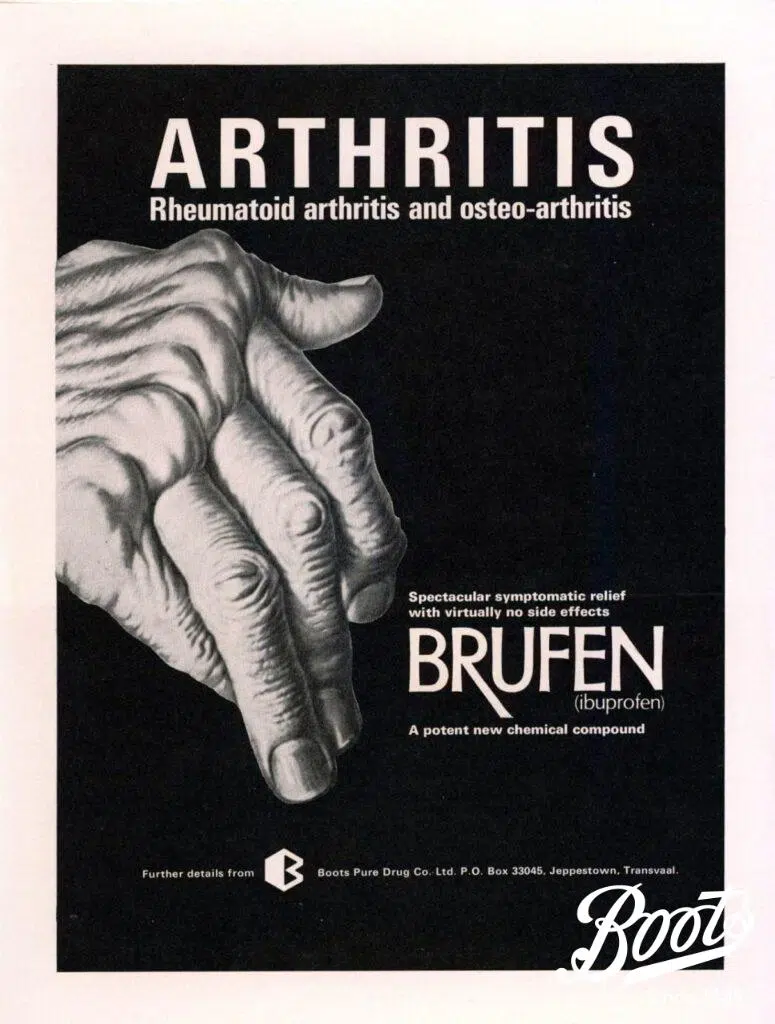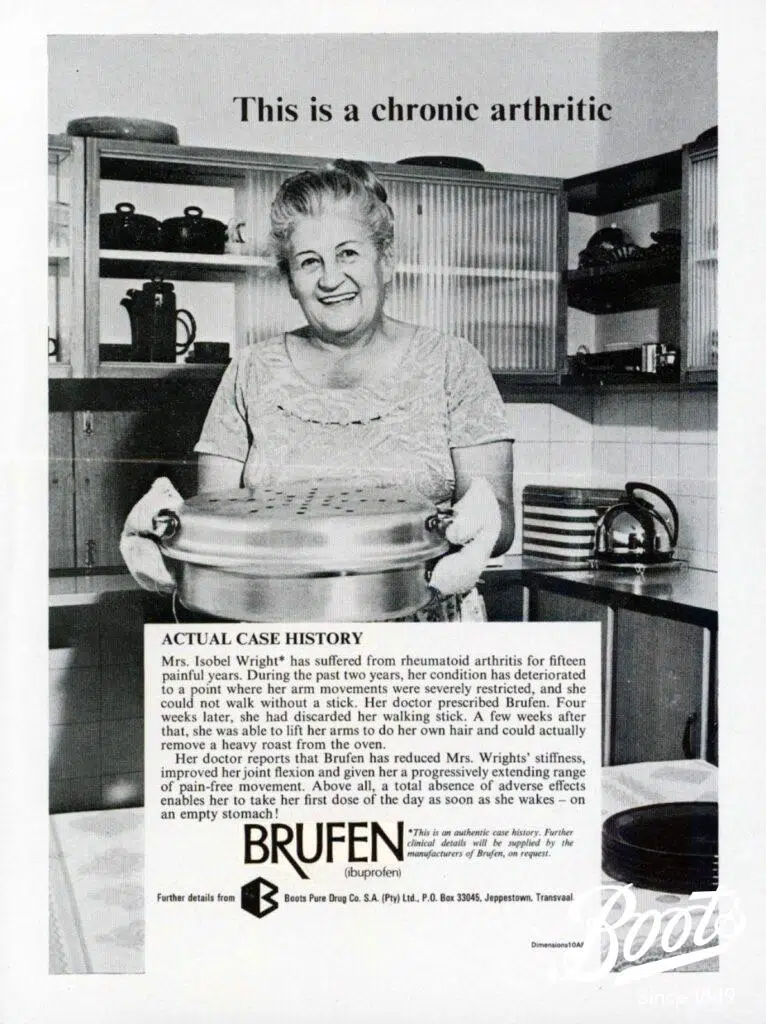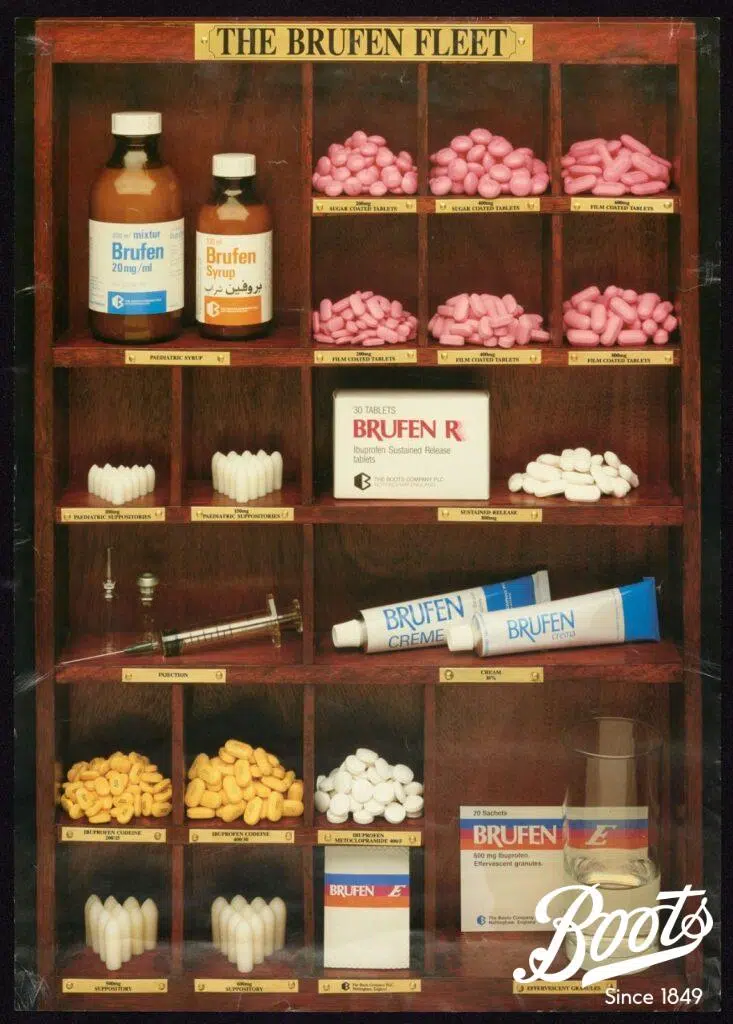
TIME TO READ
Ibuprofen: A discovery of global significance
Today, Ibuprofen is used as pain killer and anti-inflammatory. But when it was first launched by Boots, as Brufen in February 1969, it was heralded as the miracle therapy for arthritic problems, particularly Rheumatoid Arthritis.
Today, Ibuprofen is used as pain killer and anti-inflammatory. But when it was first launched by Boots, as Brufen in February 1969, it was heralded as the miracle therapy for arthritic problems, particularly Rheumatoid Arthritis. Boots research staff understood from the get-go the global significance of this ‘new drug for the hell of all diseases’ (The Bee, July 1969).
Before Brufen, rheumatic diseases had been treated with various unpleasant treatments of dubious benefit, including wax and brine baths, and gold injections. The only chemical medicines believed to stem the spread of the disease were cortico-steroids and aspirin. However, both produced unpleasant side effects when taken in the large quantities needed to be effective.
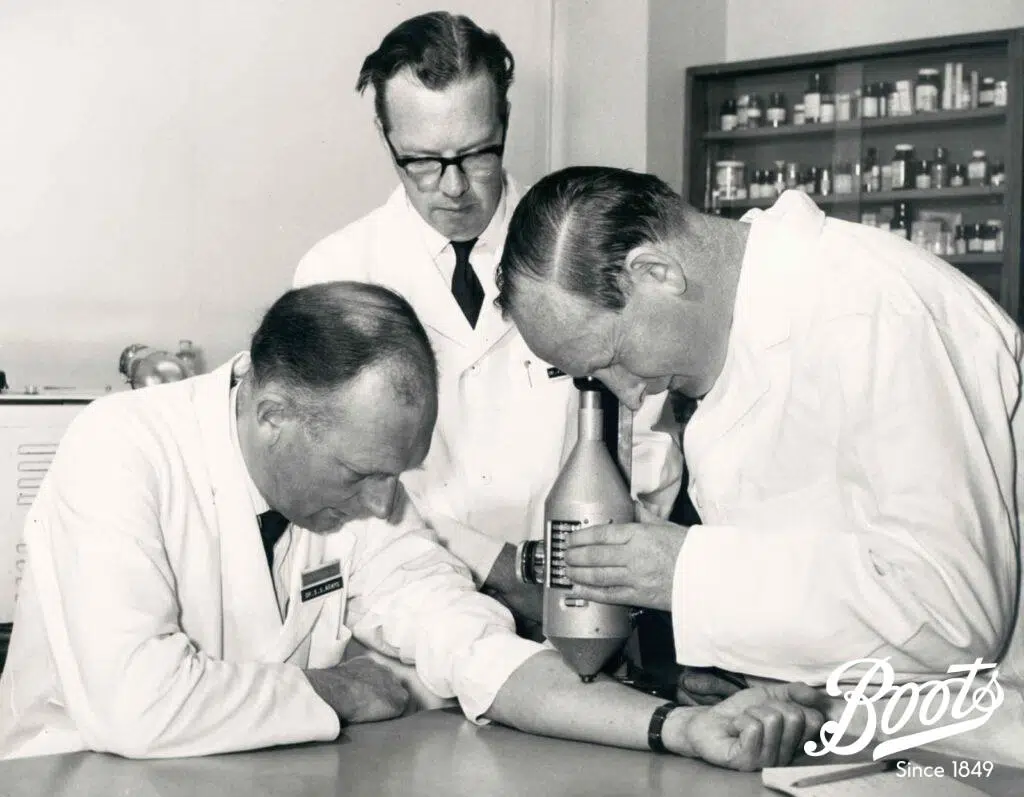
The road to discovery
Brufen was discovered by Stewart Adams (1923-2019), who enjoyed a career at Boots that lasted for over 45 years. After completing a pharmacy degree at the University of Nottingham, Adams joined the Pharmacology Division of the Research Department at Boots in 1947. Leaving for a brief two-year period to undertake his PhD at Leeds in 1950, Adams returned to Boots Research Department in 1952 and soon began working on a cure for arthritis. Little did he know that this research journey would last for almost 16 years.
Initially Adams’s research focused on how aspirin worked. He wanted to find something that worked in a similar way, with the same therapeutic benefits, but without the blood-thinning side effects. Over the coming years he and his colleagues tested over 17,000 different compounds, before selecting 600 as the most viable anti-inflammatory treatments. With the help of chemist John Nicholson, ibuprofen was finally patented in 1962. Interestingly, ibuprofen was not the most potent of the variants tested, but the scientific team chose it because of its important lack of unwanted side effects. Research culture in laboratories in the 1960s was quite different to that of today. Adams and other members of the Research Department freely admitted that they often tested the drugs on themselves. Indeed, Adams himself was the first human being to try ibuprofen.
A worldwide success
When it was launched in 1969, Brufen was only available to patients via prescription. Demand was rapid, however. Within two years of its public release, Boots had to open a new pharmaceutical plant on their Beeston factory site specifically to cope with the demand.
From the start, Boots understood the potential of Brufen beyond home markets and quickly mobilised a large international promotion campaign. In April 1969, only two months after its formal UK release, the International Division announced plans to launch Brufen in 40 overseas markets. By the mid 1970s Boots had successfully launched Brufen in 80 countries, including Canada, Russia, France, South Africa, Nigeria, Liberia, India, Poland, Czechoslovakia, and Japan. In the United States, the drug was marketed by the pharmacy firm Upjohn Drug under the brand name Motrin.
From prescription medicine to everyday relief
Because of its lack of side effects, Boots quickly explored whether ibuprofen could be sold without prescription, over the counter. This was agreed in the UK in 1983. At this point, Brufen was rebranded as Nurofen, with a new logo and redesigned packaging. It is still sold in the same distinctive silver cardboard box today. This made ibuprofen the first tablet to move across from prescription medicine to pharmacy medicine in Britain. The following year in 1984, an over-the-counter version was released in North America as Advil.
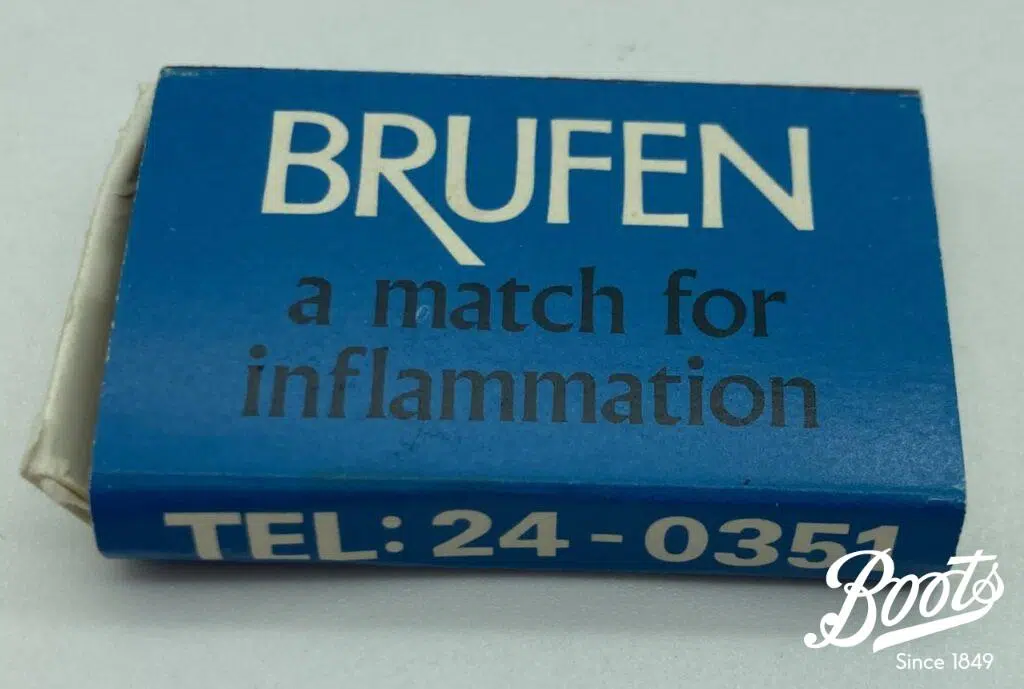
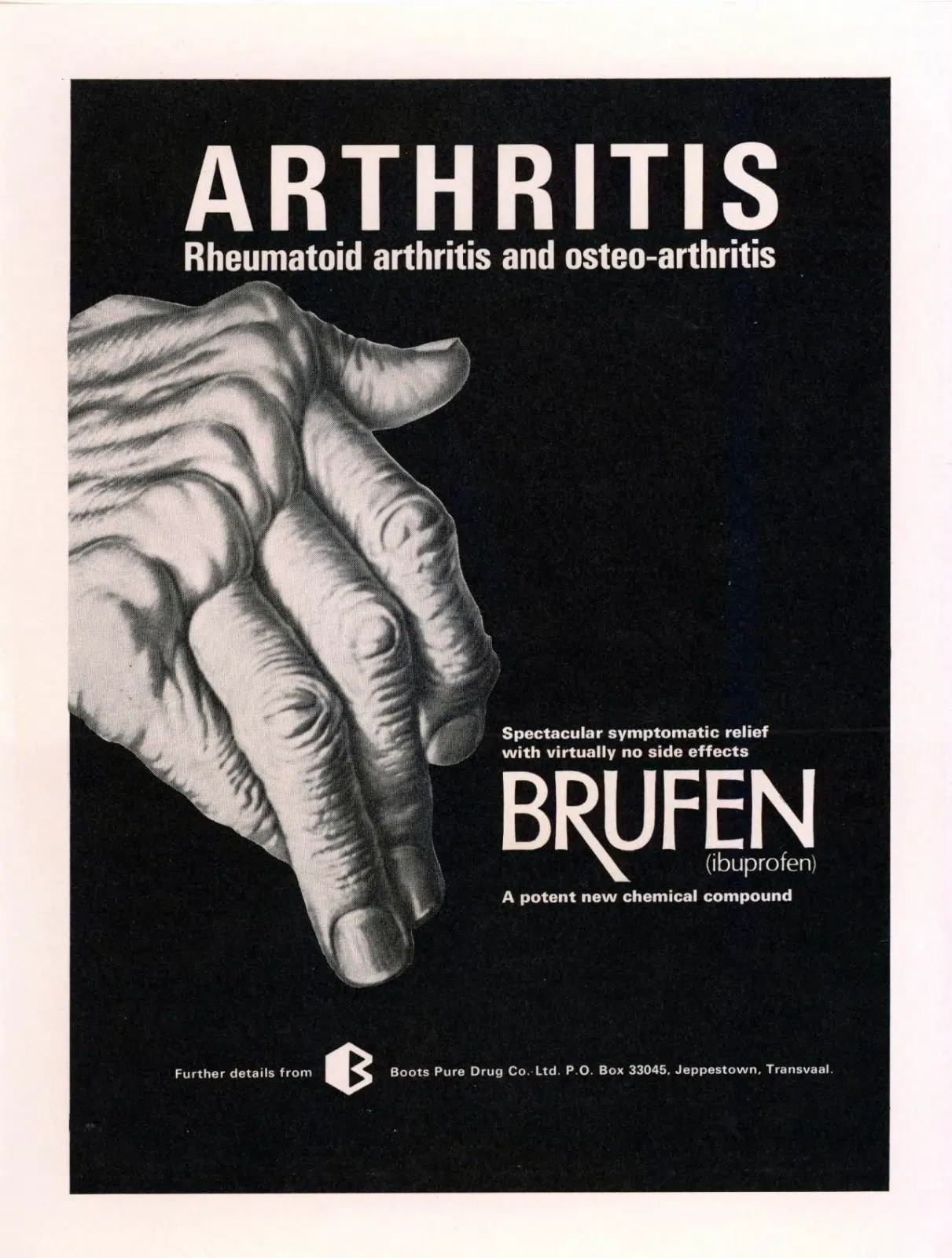
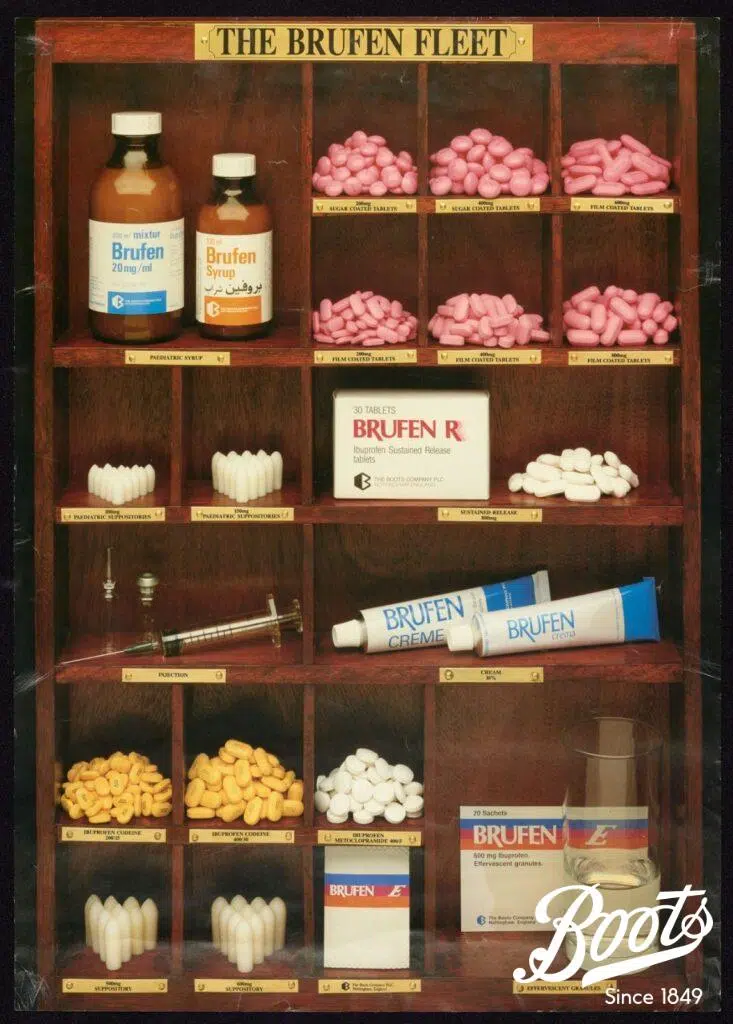
Sadly, Adams’ drug was not effective to slow down, let alone reverse, the effects of debilitating arthritic diseases. But ibuprofen’s use as a general pain killer and anti-inflammatory was secure. The discovery of its more widespread applicability was down to a lucky accident. Adams claimed that while suffering from a hangover the day before giving an important speech, he decided to try Brufen for his headache, and was delighted with the results!
Today ibuprofen is no longer solely marketed and sold by Boots. Its patent expired in 1985, and the drug is now one of today’s most popular over-the-counter pain relief medicines. Its worldwide success put Nottingham on the global scientific map. A blue plaque commemorating Adams’ discovery was placed on the wall of Boots’ original Research Department in 2013.
Image Gallery
WBA/BT/27/39/2/3/184 Photograph of Dr Stewart Adams, Dr John Nicholson, and Mr R Cobb measuring inflammatory levels published in Boots staff magazine, The Beacon, June-July 1969.
WBA/BT/12/36/4/7 Brufen launch promotional material, c1970.
WBA/BT/12/36/4/7 Brufen advertisement for the South African market, c1970.
WBA/BT/12/36/4/7 Brufen advertisement for the South African market, c1970.
WBA/BT/ID/4/1/2 ‘Operation Brufen’ Boots (India) employees packaging locally manufactured Brufen, 1974
WBA/BT/11/45/3/72 ‘The Brufen Fleet’ showcasing Brufen products produced and sold by Boots, c1986.



